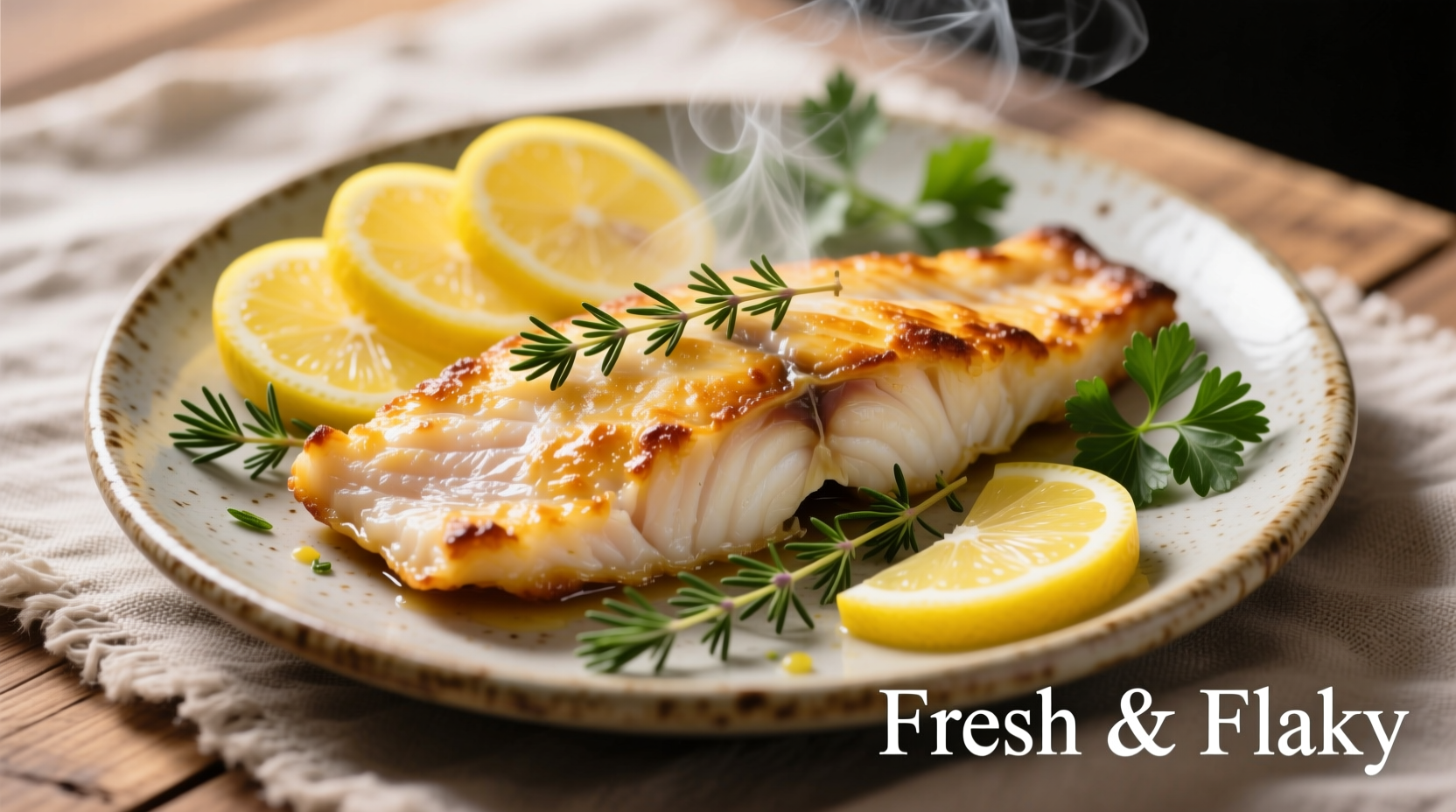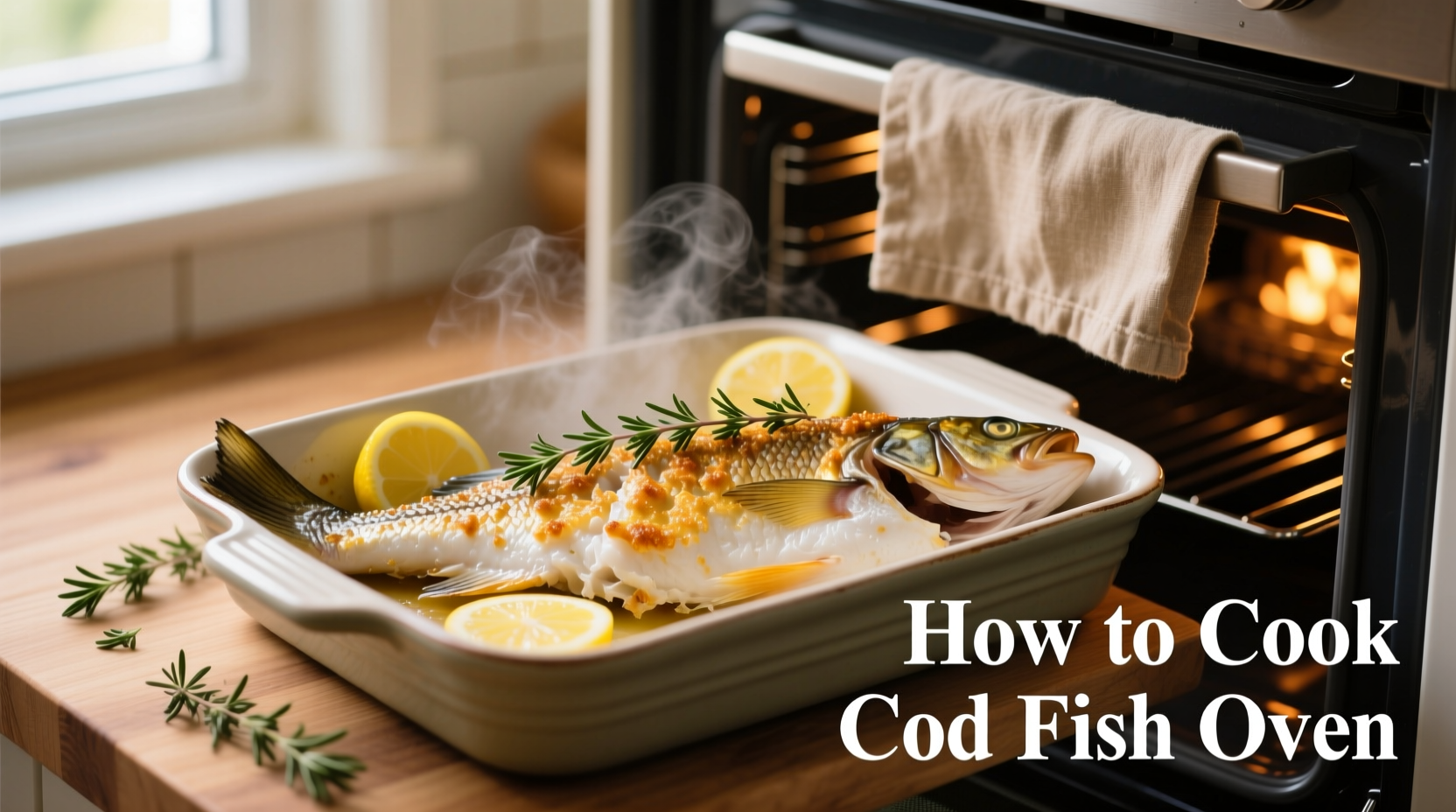Preheat your oven to 400°F (200°C), season cod fillets with salt, pepper, and olive oil, then bake for 12-15 minutes until the internal temperature reaches 145°F (63°C) and the fish flakes easily with a fork. Rest for 5 minutes before serving for perfectly moist, flaky cod every time.
Discover the foolproof method for cooking cod fish in oven that delivers restaurant-quality results at home. Whether you're a beginner or an experienced cook, this guide eliminates guesswork with precise temperature control, timing guidance, and professional chef techniques that prevent dry, overcooked fish. You'll learn how to select the best cod, prepare it properly, and create flavorful variations that transform this delicate white fish into a weeknight dinner staple.
Why Oven-Baking Cod Beats Other Cooking Methods
Oven-baking cod preserves moisture while creating delicate flakiness that pan-frying often compromises. Unlike grilling which risks sticking, or poaching which can dilute flavors, the dry heat of an oven provides even cooking with minimal hands-on time. Professional chefs favor this method because it allows precise temperature control—the critical factor in preventing cod's notorious tendency to become dry and rubbery when overcooked by just two minutes.

Step 1: Selecting and Preparing Your Cod
The foundation of perfect oven-baked cod starts before it even enters your kitchen. Look for fillets with firm, translucent flesh and a fresh sea breeze aroma—never fishy. Thicker cuts (1 to 1.5 inches) work best for oven cooking as they're more forgiving than thin fillets.
| Preparation Step | Professional Technique | Common Mistake to Avoid |
|---|---|---|
| Thawing frozen cod | Refrigerate overnight in sealed container | Rapid thawing in water which makes texture mushy |
| Drying surface | Pat thoroughly with paper towels for 30 seconds | Skipping this step causing steaming instead of baking |
| Temperature adjustment | Bring to room temperature 20 minutes before cooking | Putting cold fish directly into oven creating uneven cooking |
Step 2: Seasoning for Maximum Flavor Impact
Cod's mild flavor acts as a canvas for creative seasoning. Start with the essential trio: 1 teaspoon olive oil per fillet, ¼ teaspoon kosher salt, and freshly ground black pepper. For restaurant-quality results, add these professional touches:
- Lemon-herb classic: Thin lemon slices arranged on top with fresh dill or parsley
- Mediterranean twist: Cherry tomatoes, Kalamata olives, and capers scattered around fillets
- Spicy variation: Paprika and cayenne (⅛ teaspoon each) mixed with the salt before applying
Remember: delicate herbs like dill or parsley should go on during the last 5 minutes of cooking to preserve their vibrant flavor and color. Robust ingredients like garlic or rosemary can withstand the full cooking time.
Step 3: Oven Setup and Precise Cooking Process
Position your oven rack in the middle third of the oven for even heat distribution. Preheat to 400°F (200°C)—this higher temperature creates gentle steam within the fish while preventing overcooking. Use a rimmed baking sheet lined with parchment paper or lightly oiled foil for easy cleanup.
Arrange cod in a single layer with space between fillets. Bake according to thickness:
- 1-inch fillets: 12-14 minutes
- 1.5-inch fillets: 14-16 minutes
- Whole loins: 16-18 minutes
The USDA Food Safety and Inspection Service confirms fish is safe to eat at 145°F internal temperature, but many chefs recommend removing cod at 140°F since carryover cooking will raise it to 145°F during resting. Insert an instant-read thermometer into the thickest part of the fillet to verify.
Step 4: The Critical Resting Period
Resist the temptation to serve immediately! Let cod rest for 5 minutes after removing from the oven. This allows residual heat to complete the cooking process gently while proteins relax, resulting in significantly moister texture. Cover loosely with foil to retain warmth without steaming the surface.
Troubleshooting Common Cod Cooking Problems
Even experienced cooks encounter issues with delicate fish. Here's how to handle them:
- Dry, rubbery texture: Almost always caused by overcooking. Set a timer and check 2 minutes before expected finish time.
- Fish sticks to pan: Inadequate drying before cooking or insufficient oil. Always pat thoroughly dry and use enough oil.
- Uneven cooking: Fillets of varying thickness. Arrange thicker portions toward oven's center where heat concentrates.
- Bland flavor: Underseasoning. Remember salt needs to penetrate the fish—season at least 15 minutes before cooking.
Perfect Pairings for Oven-Baked Cod
Elevate your meal with these chef-recommended combinations:
- Citrus beurre blanc: Whisk cold butter into reduced white wine, lemon juice, and shallots
- Roasted vegetable medley: Asparagus, cherry tomatoes, and zucchini tossed with olive oil
- Herbed quinoa: Cook quinoa in fish stock with fresh thyme and lemon zest
- Crispy potatoes: Roast baby potatoes at same temperature for perfect timing
Professional chefs at the James Beard Foundation emphasize that the best sides complement rather than compete with cod's delicate flavor. Avoid heavy cream sauces or overly spicy elements that overwhelm the fish.
Frequently Asked Questions
Can I cook frozen cod directly in the oven? Yes, but increase cooking time by 50% and skip the room temperature step. The FDA recommends this method only when cooking from frozen—never partially thawed.
How do I know when cod is done without a thermometer? The fish should flake easily with a fork while maintaining slight translucency in the center. It will continue cooking during resting.
Why does my cod release white liquid during baking? This albumin is harmless protein that coagulates when exposed to heat. It indicates the fish is approaching overcooking—reduce temperature next time.
Can I use other fish with this method? Yes, this technique works for any white fish like haddock, halibut, or sea bass with minor timing adjustments based on thickness.











 浙公网安备
33010002000092号
浙公网安备
33010002000092号 浙B2-20120091-4
浙B2-20120091-4